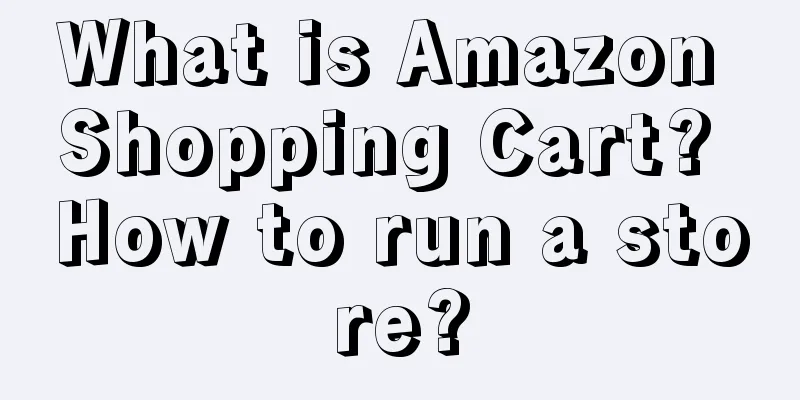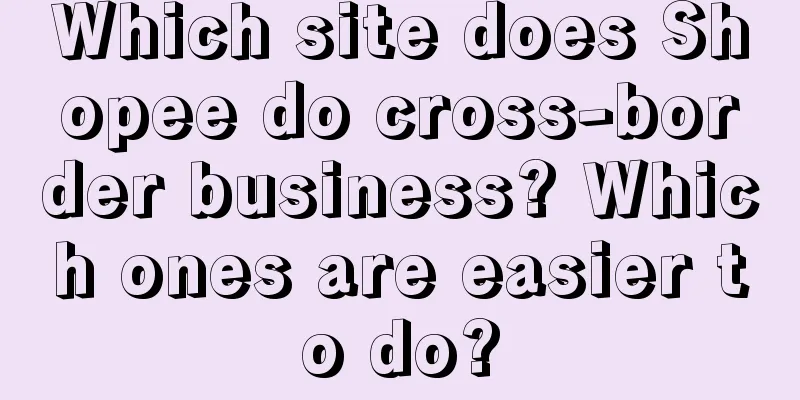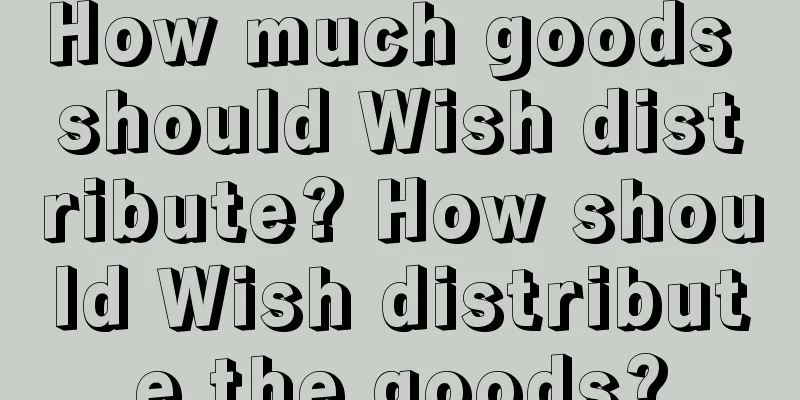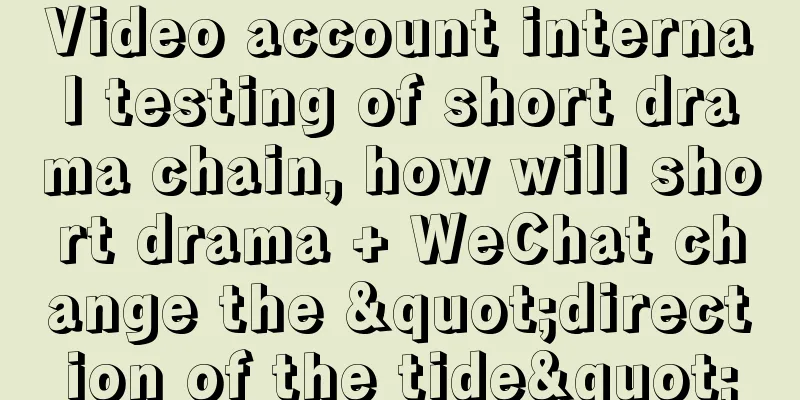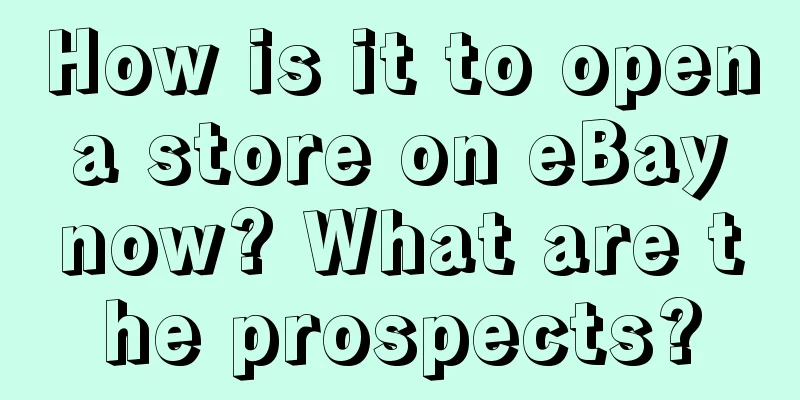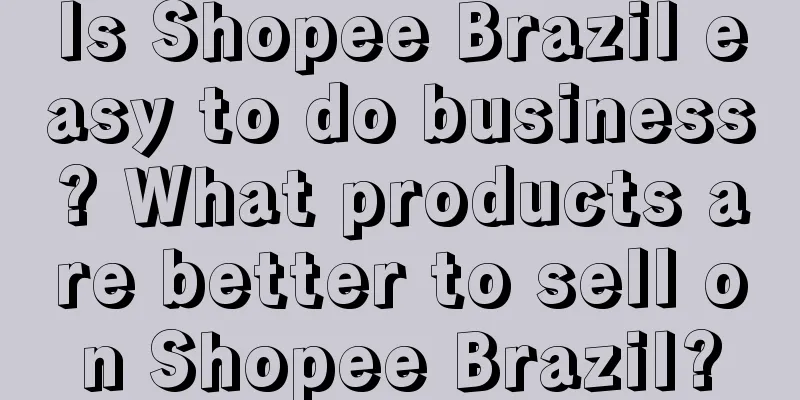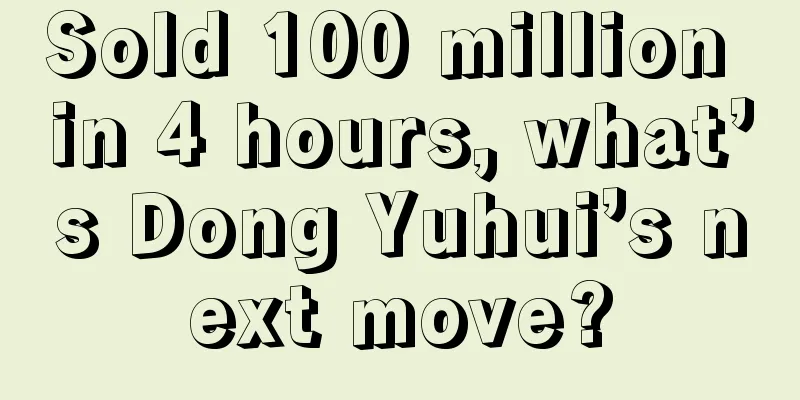The more traffic you have, the faster you die? 5 cases showing the "counterintuitive" growth path
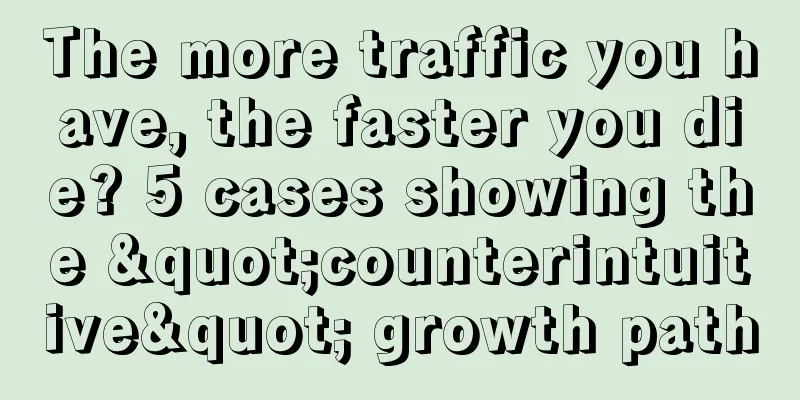
New consumption has come to a crossroads. Going left or right will lead to two different outcomes - some brands will rise and fall quickly with the changes in traffic, while others will break free from the control of traffic and find new growth paths. In a recent conversation with a trader, I felt a strong sense of "traffic anxiety". Traffic outlets come one after another, but many brands that are good at traffic have fallen into the dilemma of broken capital chain, zero or even negative profits. Many consumer brands have no room for improvement in terms of cost-effectiveness, but still have difficulty in seeing growth. When the market returns to rationality, how can we still get repeat purchases after subsidies and promotions are gone, and make users really remember? The first thing brands need to do may be to get rid of the traffic trap. This is why many new consumer brands have expanded offline stores and placed offline advertisements such as Focus Media after reaching a certain scale online. This article disassembles five cases of successful brand growth paths through the "two Weibo, one Douyin, and one Focus" model, including Meike Landou, Ulike, Kongke Instant Noodles, Telanis, and Deyou, and solves three myths about brands: 1. When traffic costs rise, only brands have bargaining power. Brand power is not only reflected in "popularity" and "brand association", but also helps brands leverage online resources and save traffic costs; 2. There is a scientific methodology for building brand power. Only by allocating budget reasonably can the effect be maximized; 3. The truth is: a brand with a sales volume of 100 million yuan online may not be popular offline. Only by breaking through the circle and preventing roll-ups can a brand achieve lasting growth. 1. Traffic dividends will eventually bottom out, and only brands have bargaining powerA study by Kantar, a world-renowned data insight and consulting company, shows that the top 100 brands in China have one thing in common: 70% of sales come from brand awareness, and 30% come from short-term promotions and traffic conversion. If too much sales are brought in by short-term promotions, profits will decrease. This coincides with the theory of kinetic potential energy of swordsmanship. The underlying logic of kinetic energy brands is "more, faster, better, and cheaper", with "efficiency" at its core. They provide consumers with what they want faster, more accurately, and better. The sales of kinetic energy brands may start quickly, but it is difficult to grow steadily, especially when traffic becomes expensive. They start with traffic and are easily defeated by it. Most of the brands that are trapped by traffic nowadays are "kinetic brands". It is easy to scale up in the dividend era, but it is difficult to make profits by burning money to subsidize traffic. And profits are precisely the pain point for brands to survive in the long run. The key to potential brands is to create a sense of brand scarcity and value, thereby creating a brand premium. However, such brands are generally small in size when they first start, and are prone to damage brand power after expanding in scale. Kinetic energy is not absolute, but can be transformed into each other. In fact, in the actual operation of a brand, it must be combined with kinetic energy. Just like Uniqlo, it is a brand with both kinetic energy and potential energy. If a kinetic energy brand wants to get rid of traffic anxiety, the key is to find a way to transform potential energy. In this regard, some brands have already made successful attempts. For example, Meijia Landou, Ulike, Kongke Instant Noodles, Telanis, Deyou and other brands use the media represented by "Weibo, Weibo and Douyin" to spread volume and topic planting online, and rely on the living space media represented by Focus Media to expand influence and tap brand growth offline. It should be emphasized that if the focus is only used to attract offline traffic, then only one-third of the budget is used correctly. From these brand cases, we can see that the greater significance of building brand power through offline media is to gain "bargaining power." The current traffic environment has entered the paid era, and has essentially returned to the logic of traditional media. Therefore, we will see more and more mature brands experiencing an explosion online. First, they have more budget for advertising, and second, their brand power can leverage more online resources and save traffic costs. For example, the first floor of a shopping mall is usually the most expensive, but if it is Uniqlo, the rent can be reduced or even waived. It is very expensive to be on the cover of a fashion magazine, but if the celebrity is big enough, it can be free. This is actually a manifestation of the brand effect. High potential energy can be converted into real money. The same is true for online channels. Brands do not want to be controlled by the platform mechanism and hope to establish a stable pricing system. However, when traffic costs rise, only brands have bargaining power. After brands such as Meike Landou, Ulike, Kongke Instant Noodles, Telanis, and Deyou have used Focus Media to boost their influence, they have used platforms such as Douyin and Tmall to attract traffic and achieve conversion. On the other hand, the popularity they have accumulated offline will also help them gain better resource positions on online platforms. In addition, offline influencers can also help improve the bargaining power of brands and bloggers when they cooperate. On online platforms, the impact of Dabo on brand sales is self-evident. Some top influencers can even ask brands to break prices, which is essentially caused by "potential energy difference". Influencers will stop cooperating because of a piece of negative news about a brand, and naturally they will give in for the sales guarantee and potential energy brought by the brand effect. Brand power is the cornerstone that supports product prices. For example, Kongke instant noodles can maintain a stable high customer order during promotion because of strong brand support. 2. How to find an effective way to build brand powerCompared with the immediate sales growth brought by online traffic, offline marketing is more like a delayed gratification for brands. However, we can see from the above brand cases that although brand image is an intangible asset, it can be transformed into real profits and increments. There is a scientific methodology for building brand power and converting it into growth potential. Different brands can choose the right strategy based on their budget and operating conditions. First of all, a reasonable budget allocation can maximize the effect. Based on the analysis of more than 1,000 advertising cases, Kantar calculated that the best media advertising mix ratio for mature brands is 5:5, that is, 50% for brand building and 50% for traffic harvesting. At the brand building level, the best ratio for online media represented by "WeChat, Weibo, Douyin, and Xiaohongshu" and offline life scene media represented by Focus Media is also 5:5. To be more specific about offline distribution, it is necessary to consider issues such as explosive/cost-effective strategies and how to combine products. If the budget is around 20-50 million, you can use a detonating strategy, making full use of Focus Media's three media combinations of elevator TV + elevator posters + smart screens, and broadcast them frequently within 4-6 weeks. For example, the children's shoe brand Telanis launched Focus Media's three media combinations in first- and second-tier cities such as Beijing, Shanghai, Guangzhou, Shenzhen, Hangzhou and Chengdu during the Double 11 event last year, and finally achieved the top sales of children's shoes on Tmall during the Double 11 event. The flagship store's sales exceeded 100 million for the first time, a year-on-year increase of 137%, and an 11% increase in unit price. If the budget is within 20 million or 10 million, you can adopt a cost-effective approach, accurately select Focus Elevator posters and smart screens, and launch them in 2-3 weeks during major promotional events such as 618 and Double 11. This is because Focus Elevator posters and smart screens have a more obvious effect on sales conversion, especially elevator posters, which are more suitable for linkage platform promotions, while Focus Elevator TVs are more suitable for brand awareness and potential. We can see that Meiji Landou, Ulike, Kongke Instant Noodles, Telanis, and Deyou basically all adopt the detonating strategy. Among them, after Telanis was launched, the brand keyword search volume of Tmall flagship store in August of that year increased by 40% month-on-month, the customer unit price increased by 25% year-on-year and month-on-month, and the sales volume in early September increased by 141% year-on-year; after the personal care brand Deyou adopted the detonating strategy, its sales increased by more than 5 times in 2022; after Ulike was launched on nodes such as 3.8 and 618, its sales increased by 1.5 times and 2.5 times year-on-year respectively. From 1 billion in 2020 to 2.5 billion in 2021 and 4.5 billion in 2022, Ulike's rapid growth in annual sales is due to its extensive offline popularity. Ulike has conducted three rounds of targeted advertising in half a year, with each round lasting 3-4 weeks, to accurately penetrate the target population. Through the case of Meiji Landou, we can also see the possibility of creating new consumer scenarios through offline media. Meiji Landou frequently broadcasts commercials on Focus Media’s elevator TVs, repeatedly showing consumers how cheese sticks can be used in breakfast, sports, and socializing. It has invisibly completed market education and integrated the new product category of cheese sticks into users’ lifestyle habits. Of course, the breakthrough of Meiji Landou's category is due to the combination of product innovation, overall marketing strategy, spokespersons, etc. Focus Media acts as an amplifier, implanting innovative scenarios into the minds of users. If we look at the bearish side, we can achieve channel-assisted growth through segmented media. In the early days of its establishment, Kongke Noodles started with live streaming. With the help of the influence of top anchors such as Li Jiaqi, it quickly opened up the market, and then began to deploy platforms such as Douyin, Xiaohongshu, and Bilibili to carry out seed marketing. The early development path of Kongke Instant Noodles was no different from that of most new consumer brands. If it had only been online, it might also face a traffic dilemma now. The turning point was in May 2022, when Kongke Instant Noodles, which had been established for 3 years, began to be launched in more than 20 first- and second-tier cities such as Beijing, Guangzhou, Shenzhen, Chengdu, and Hangzhou, reaching the mainstream urban population and warming up for the upcoming 618. This time, the campaign attracted a lot of traffic to its Tmall store, so Kongkemian decided to invest again. Finally, by launching a large-scale campaign to attract “pan-precise groups” on Focus Media, Kongkemian’s conversion rate increased significantly. The monthly sales in May were 100 million, and the sales exceeded 100 million in nearly 18 days during the 618 period. 3. To achieve sustained growth, the key is to break the circle and prevent rollbackMany new brands have achieved massive growth online, with GMV reaching hundreds of millions. But the truth is that there is a gap between online platforms and offline channels. Even if online sales exceed 100 million, offline sales may not attract anyone. In online channels, brands attract traffic through mechanisms, and users pay for low prices, not brands. This results in many brands having high GMV, but once they are separated from the mechanism, they will lose users. Long-term promotion is a loss for brands, and low prices and mechanisms are a bottomless pit, which will eventually make brands lose profitability. The path of hot products that many brands rely on now also has its limitations. Relying on hot products + traffic dividends, cutting-edge brands can quickly reach a volume of over 100 million online. But without the moat of "brand power", even if you finally create a hot product, competitors will quickly imitate it and replace it at a lower price. What follows is product homogeneity, price wars, rising traffic costs, and squeezed profits. More and more brands realize that what is more terrifying than the decline in GMV is that "users can't remember my name." There are only two ways to solve these problems - breaking the circle and preventing roll-up. If a brand wants to truly break through the circle, the key is to break through the barriers between online and offline. When online traffic encounters a bottleneck, it is precisely when it is necessary to invest in offline media. After a new brand has accumulated a certain scale through online channels, attacking offline channels is like entering the sea from the rivers and lakes, forming a scale advantage. In order to prevent the roll-up, it is necessary to build a real moat, the brand. The new consumer products that have emerged online pursue accurate traffic, which is essentially the logic of "goods find people", and the brand is to let "people find goods", so that people will think of you when they mention this category. Therefore, cutting-edge brands need to find their own differentiated value, seize the time window to launch saturated delivery, and establish the mindset of brand = category in the minds of users, that is, to break the dimensional wall, go to the real world, and establish "heart domain traffic". Only in this way can we achieve lasting and exponential growth. Ulike's breakthrough just proves this path. The opportunity for Ulike to invest in Focus Media was that it had reached the ceiling of online traffic. If it continues to only do online business, the brand will always stay in the existing circle and it will be difficult to increase its popularity. Therefore, starting from 2021, Ulike launched multiple rounds of explosive advertising to open up new traffic entrances. Through the launch of brand advertising, Ulike connected the brand curve before the traffic curve was about to bottom out, and found a new growth path through the resonance of traffic and brand. It is worth noting that in offline media, brands cannot use traffic advertising as a way to advertise their brands. Brand operators have always been pursuing a "calculable sense of security." But the impact of brand mindset is intangible and far-reaching. Whether it is public domain traffic or private domain traffic, it can eventually be transformed into "heart domain traffic" to break through the "cocoon" of the algorithm and precipitate traffic into brand assets, which is also the real source of brand security. Traffic and brand are not mutually exclusive, but complementary. After reviewing the cases of five brands including Meike Landou, Ulike, Kongke Instant Noodles, Telanis, and Deyou, we found that their commonality is that after the product has been verified by traffic, it is further broken through the circle through segmentation. However, offline media is only an amplifier. The fundamental way to build brand power is to find your own differentiated advantages. Every new consumer brand must think clearly about three questions: What are the advantages of the product? What are the differences with competitors? What are the pain points of consumption? Only by answering these questions can we see the advantages and disadvantages of the brand and better use centralized media such as Focus Media to build a real moat of "brand mind". 4. Analyst CommentsAnother 618 is coming, and many brands say they can't roll anymore. Everyone realizes that discounts and promotions cannot bring long-term growth. Node promotions tend to be normalized, and some brands try to break away from the platform mechanism, return to their own marketing rhythm, and take the initiative in pricing. And these actions are all based on "brand". Brands are looking for new growth, and the biggest growth in the future will come from "brand power". Traffic is countless zeros, and the brand is the first one . Instead of chasing the dividends of different traffic platforms, it is better to create compound interest for the brand. At a crossroads, all brands have reached the point where they need to make a choice. By breaking away from the traffic and looking at the future with a long-term perspective, they may be able to find a way out. Author: Jingmin Source: Knife Skills Research Institute (ID: DigipontClub) |
<<: 【Real Money Experience】The rhythm and strategy of big promotion marketing
>>: Some thoughts for May 2023!
Recommend
Where can I find Amazon relocation fees? Are relocation fees high?
If Amazon's products have been piled up in the...
Kudi Coffee, which is trying to copy Luckin Coffee, needs to improve its product strength and strengthen its brand marketing
Recently, we can always see Kudi Coffee on Douyin,...
What does it mean when eBay is restricted? How to deal with it?
The entry threshold of eBay is relatively low, and...
How to advertise on Wish? What is the method?
As one of the cross-border e-commerce platforms, W...
Can foreign shopping websites be mailed to China? Specific situation analysis
Many people have only bought things on domestic e-...
How to write new media titles? 10 practical methods behind thousands of popular titles!
A good title is like a magnet that can quickly att...
How to set up Amazon pre-sale? Are there any discounts for Amazon pre-sale?
As one of the world's largest e-commerce platf...
In-depth analysis: Three global trends herald the arrival of the era of long-term branding
Current trends show that if a brand wants to devel...
Short dramas in Japan: Preferred to be refined rather than rough | Focus on international short dramas ①
The Japanese micro-short drama market is developin...
Is “giving parents Zulijian” the right strategy?
The product becomes a gift because of the brand po...
With 50 million members and member contributions accounting for over 50%, how does Dicos operate its private domain?
"Private domain" is a hot operation conc...
Why is innovation so difficult? This is my understanding after studying several companies.
The author studied several companies and found som...
What does Amazon ERP software mean? What are the functions of Amazon ERP system?
There are many merchants engaged in cross-border e...
How about Shopline independent website? Advantages
I believe some merchants have heard of Shopline, b...
Mixue Ice City adds fuel to the fire of "tea literature"
Mixue Ice City has continuously innovated its onli...

